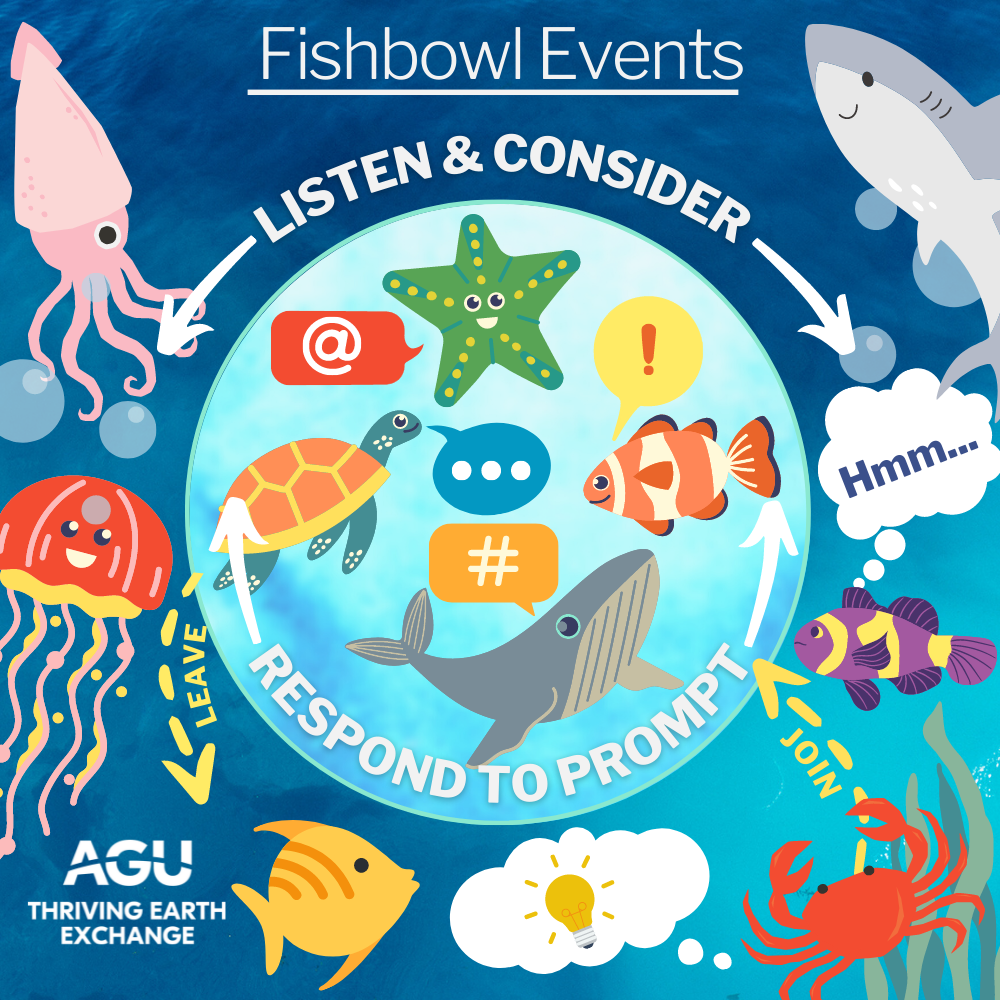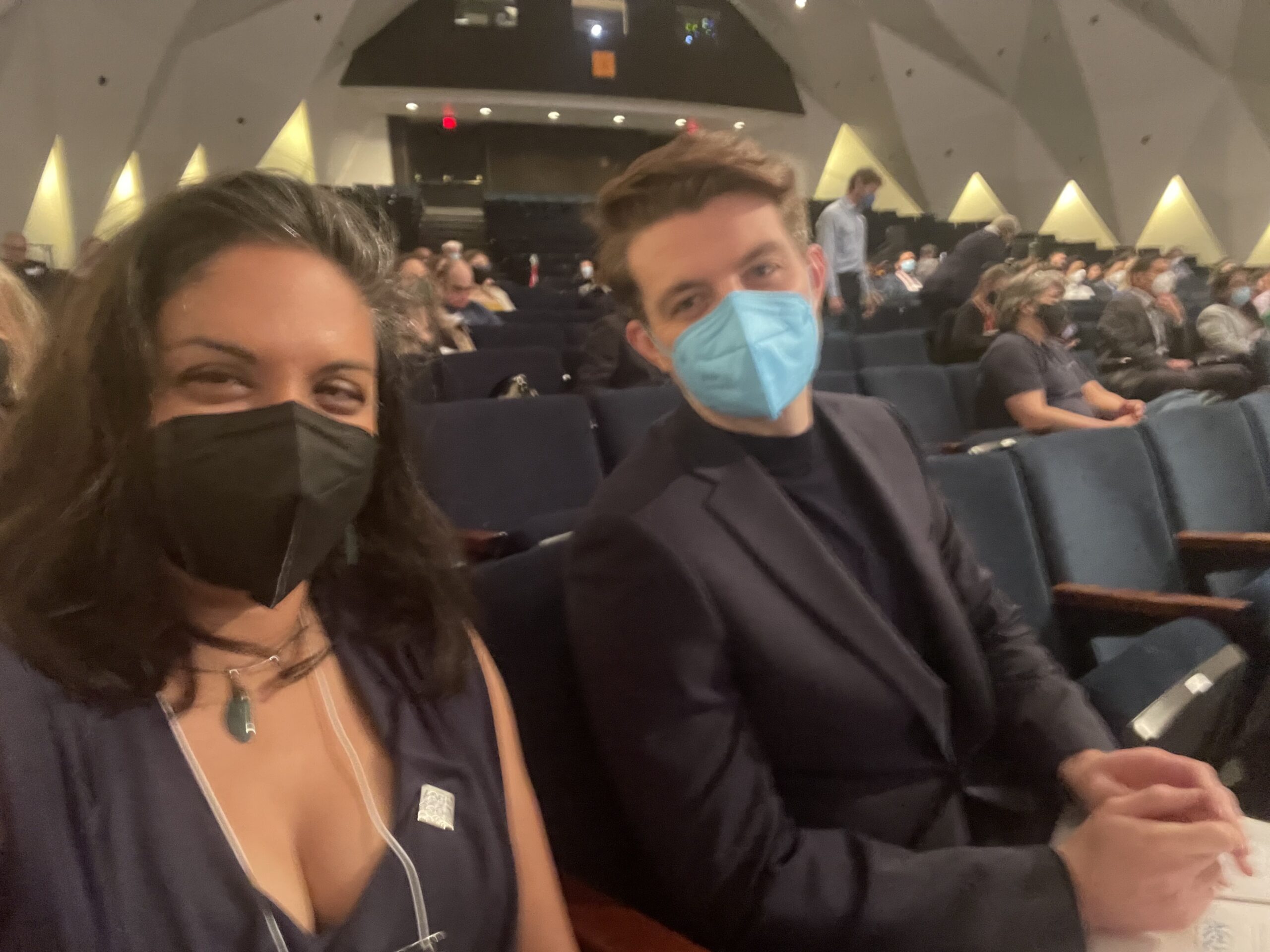Author: Natasha Udu-gama

On 12 May 2022, Thriving Earth Exchange hosted a public conversation on “What does equitable co-production look like in practice? A discussion.” I served as an advisory board member for the NSF EAGER grant on Equity in Co-production last year and the organizers asked if Thriving Earth would be willing to host this conversation. As I considered what format would be best for such an important conversation, I remembered a concept that had long intrigued me: a fishbowl event. A fishbowl is simply an interactive conversation between a medium- to large group of individuals that fosters greater engagement. In person, the room is set up with chairs in a series of concentric circles around a group of about 4-5 chairs with a moderator. The idea is to engage as many participants as possible, so the moderator encourages those in the concentric circles to step up in consecutive rounds.
So, when presented with this opportunity to do an interactive activity with the public I suggested doing a fishbowl conversation. Met with a lot of blank stares, I realized how little many people knew about this concept, let alone had actually done it. And, since we were emerging from a worldwide pandemic, we needed to figure out how it could be done in an engaging, hybrid manner. Clearly, we would need to spend some time explaining the concept and convincing people of its value.
With a lot of effort and ideating from a number of folks on the planning committee (thank you esp. to Dr. Karen Akerlof, Dr. Kristin Timm and team), my colleague, Blake McGhghy, Thriving Earth’s Community Lead Engagement Program Manager, and the staff at the National Academies (thanks especially to Patsy and Quin; not to mention John and Matt, our in-room technicians), we managed to pull off a successful event with 80-100+ in our in-person audience and about 1500 online with active participation.

NASEM Fishbowl – Screenshot from NASEM video of event
You may wonder what is necessary and effective in planning and executing a fishbowl style conversation. Here are some tips and lessons learned:
- Seed the questions and starting line-up. Be sure to have about 3 starting questions and a starting line-up of participants. By having questions at the ready, you’ll avoid any awkwardness in the time between asking for questions and questions trickling in. If possible, it also helps to ask a few participants in advance to be willing to go to the middle to start the conversation. Often, people are somewhat reticent to volunteer themselves for a round (or two) of questions.
- Prep your starting line-up. Be sure to take a little time in advance to prepare those who have volunteered to be your starting line-up so they understand what a fishbowl is, will be willing to step down after 1-2 questions, and are ready to help you encourage others in the audience to step up.
- Give a heads up! As questions from the audience come in, rather than surprising the newest lineup of “fish” with a question that they may not be prepared to answer, give a brief preview of the topic of the next question. I learned this on the fly that day, as people were reticent to join the conversation but seemed more willing after I gave a preview.
- Try to find a way to bring more online participants into the conversation. Trying this for the first time and doing it hybrid was a huge lift for anyone. We were only able to invite a small number of online participants to contribute because they had to be given an invitation before joining the Zoom room – which is impossible to do since this was an open public event with too many people to do it well! Therefore, I’d recommend having an online moderator connect with the in-person so that online participants interested in participating can be selected, shown and muted/unmuted as they leave/join the conversation.
- Have support staff to assist by obtaining and recognizing good and relevant questions. It was absolutely crucial to have Blake and others monitoring the online chat for questions and crowdsource questions rapidly since they were flowing too fast for our team to keep up! That level of discernment enabled the conversation to flow.
- Mitigate anyone but those in the middle of the fishbowl from speaking aloud. To keep the conversation flowing within a short time period, I recommend preventing people from voicing questions aloud to mitigate any long-winded comments. Rather, have index card with a pen/pencil for each seat (especially during pandemic times!) on each individual chair.
A fishbowl conversation is great if you want to bring a lot of different voices to weigh in on a topic. It is an equitable and inclusive tool for anyone to use. Of course, it’s much easier doing it either entirely in-person or entirely online. If you plan to do hybrid, you may need a lot of technical support and a team to help you with the various moving pieces, so tread carefully when considering that as an option for your next fishbowl. Regardless, we at Thriving Earth Exchange would welcome your thoughts, comments, experiences about this activity – please share below or tweet @ThrivingEarth.

Natasha and Blake at the National Academies of Science, Engineering, and Math event. Photo courtesy of Natasha Udu-gama

1 Comment
Virginia ChaidezJul 28, 2022 at 1:37 PM
I attended this event online and it was my first experience with the fish bowl concept and I got a lot out of it. Job well done to the facilitators and behind the scenes that made this such an accessible and engaging conversation. We need more of this kind of interaction and dialogue, along with the support to make it happen. Thank you for introducing me to this concept!